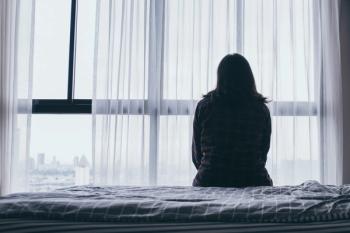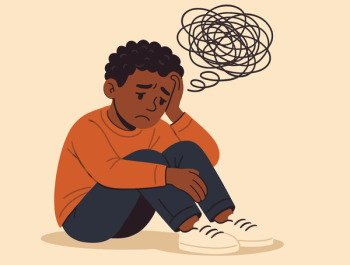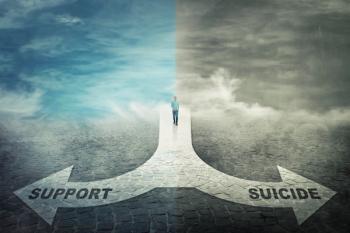The APA website offers a page called “
Helping residents cope with a patient suicide
.” Among the useful recommendations is attending APA meeting workshops on the subject, like the one we will offer in Atlanta: Workshop 4122 – “Responding to the Impact of Suicide on Clinicians,” Tuesday, May 17 3:30 pm-5 pm, Georgia World Congress Center, Level 4, Room B404.
What are the effects on the clinician when his/her patient dies by suicide? How to respond? Drs Plakun and Tillman have been offering a workshop on responding to the impact of suicide on clinicians as part of the APA Annual Meeting since 2004.
1. How likely is it that a psychiatrist will experience the death of a patient by suicide?
The suicide of a patient has been recognized as an occupational hazard for mental health clinicians.1 Studies have reported that 25% to 60% of psychiatrists will have a patient die by suicide during his or her career. Estimates suggest that the likelihood is closer to 50%.2-5
Psychiatrists often help patients at high risk, treat those with acute psychiatric illness in the ED or inpatient settings, and manage medications for more seriously disturbed patients. In addition, psychiatrists whose practice primarily involves prescription of medication see a high volume of patients and thus have more risk exposure.
In studies of clinicians who have a patient die by suicide, up to 38% of psychiatrists report severe distress.
The death of a patient by suicide has been shown to have more severe effects on trainees and early career professionals. These young clinicians may not have thought about the possibility of the death of a patient. They may feel vulnerable in terms of their experience and knowledge-base in caring for patients who are suicidal or more severely disturbed in the area of aggression and impulsivity.
2. What are the known effects of patient suicide on clinicians?
Reactions to the death of a patient by suicide vary. Some psychiatrists rationalize that, like colleagues in oncology or cardiology, there are some mental illnesses with a fatal trajectory and thus suicide is an expectable outcome. Unlike other medical specialties, however, the patient who dies by suicide has been both the victim and perpetrator of a fatal event.
In studies of clinicians who have a patient die by suicide, up to 38% of psychiatrists report severe distress about treatment decisions, failure to hospitalize the patient, concern about negative reactions by the physician’s institution, or fear of a lawsuit.6
Other reactions to a patient death by suicide include: traumatic reactions, anger, sadness, serious self-doubt about one’s choice of profession, fear of negative judgment by colleagues, decisions not to treat more disturbed patients, self-criticism, and experiences of stigma.7 Studies of those bereaved following a suicide show that survivors often feel more shame, stigma, blaming, and anger than those bereaved from other causes of traumatic sudden death.8
Next steps >
3. If you or a colleague experience the death of a patient by suicide, how should you respond?
If your patient dies by suicide, there are several tasks to attend to. Pragmatic tasks include notifying your malpractice carrier and reviewing the events leading up to the suicide. If you work in a hospital or organization, there are likely sentinel event reviews, risk management reviews, or other meetings designed to identify opportunities to improve care based on case-specific learning. In these meetings it is important to process the event with a stance that avoids either blaming or premature reassurance that the death was inevitable.
In private practice settings, clinicians who lose patients to suicide are often left alone with the event and its difficult emotional aftermath. We recommend that clinicians review the event with a trusted colleague, supervisor, or personal psychotherapist.
If the clinician is part of an organization, then meeting in role-related groups may be useful (eg, residents, attendings, supervisors, administrators). In addition to these groups, it is quite useful to find a way to convene the staff in a peer protected environment to discuss the sense of trauma and painful feelings associated with the event.
Clinicians often report a sense of increasing isolation following the death of a patient by suicide. If a colleague’s patient dies by suicide, then reaching out in the days, weeks, and even months following the event to lend a supportive and compassionate listening stance is often helpful to the colleague.
The clinician must also prepare for the possibility of meeting with the patient’s family. This includes planning carefully how to manage the confidentiality boundary. We recommend offering a non-judgmental space for the family to process their questions and feelings, and that the clinician receive the range of feelings with an empathic stance, while neither accepting or assigning blame for the loss.9
Disclosures:
Dr Plakun is Associate Medical Director and Director of Biopsychosocial Advocacy at the Austen Riggs Center, and former Harvard Medical School clinical faculty member. He is a Distinguished Life Fellow of the American Psychiatric Association, and leader of its Psychotherapy Caucus. Dr Plakun, who has been honored as the Outstanding Psychiatrist in Clinical Psychiatry by the Massachusetts Psychiatric Society, is a leader in organized psychiatry and an advocate for the value of psychotherapy and other psychosocial treatments. Jane G. Tillman, PhD, ABPP, is Director of the Erikson Institute for Education and Research of the Austen Riggs Center. She is an Assistant Clinical Professor at the Yale Child Study Center and an Instructor in Psychology in the Department of Psychiatry-part time-at the Harvard Medical School. A clinical psychologist and a psychoanalyst, Dr Tillman has a special interest in suicide research.
References:
1. Chemtob CM, Bauer GB, Hamada RS, et al. Patient suicide: occupational hazard for psychologists and psychiatrists. Prof Psychol Res Pract. 1989;20:294–300.
2. Litman RE. When patients commit suicide. Am J Psychother. 1965;19:570–576.
3. Kleespies PM, Smith MR, Becker BR. Psychology interns as patient suicide survivors: Incidence, impact, and recovery. Prof Psychol Res Pract. 1990;21:257–263.
4. Pilkinton P, Etkin M. Encountering suicide: the experience of psychiatric residents. Acad Psychiatry. 2003;27:93–99.
5. Ruskin R, Sakinofsky I, Bagby RM, et al. Impact of patient suicide on psychiatrists and psychiatric trainees. Acad Psychiatry. 2004;28:104-110.
6. Hendin H, Haas AP, Maltsberger JT, et al. Factors contributing to therapists’ distress after the suicide of a patient. Am J Psychiatry. 2004;161:1442–1446.
7. Tillman JG. When a patient commits suicide: An empirical study of psychoanalytic clinicians. Int J Psychoanal. 2006;87:159–177.
8. Sveen CA, Walby FA. Suicide survivors’ mental health and grief reactions: a systematic review of controlled studies. Suicide Life Threat Behav. 2008;38:13–29.
9. Plakun E, Tillman J. Responding to clinicians after loss of a patient to suicide. Dir Psychiatry. 2005;25:301–310.
















